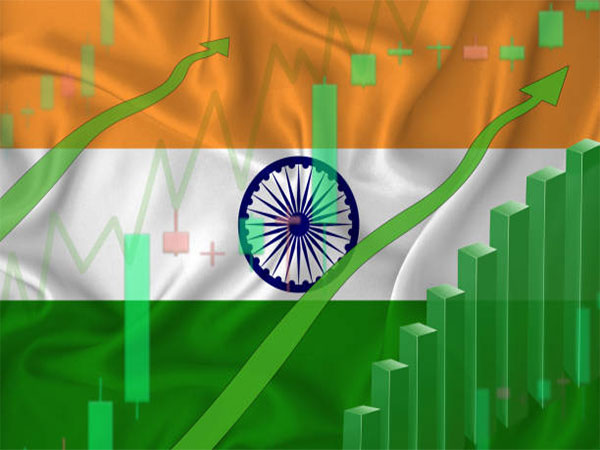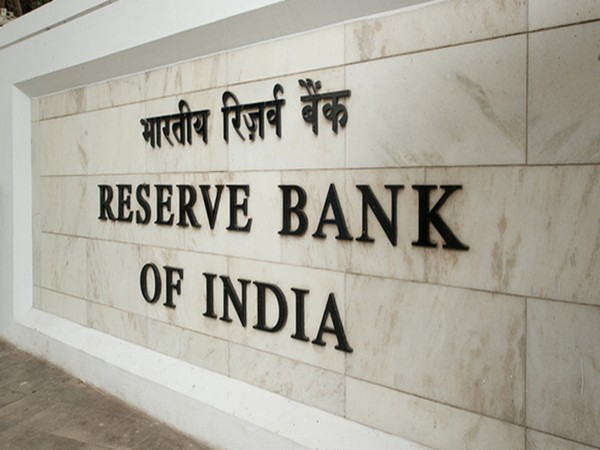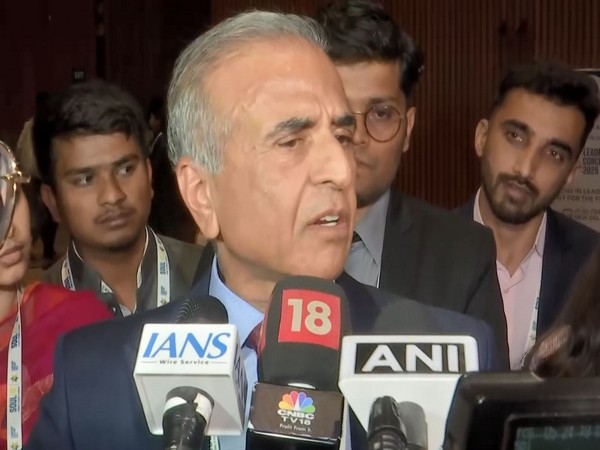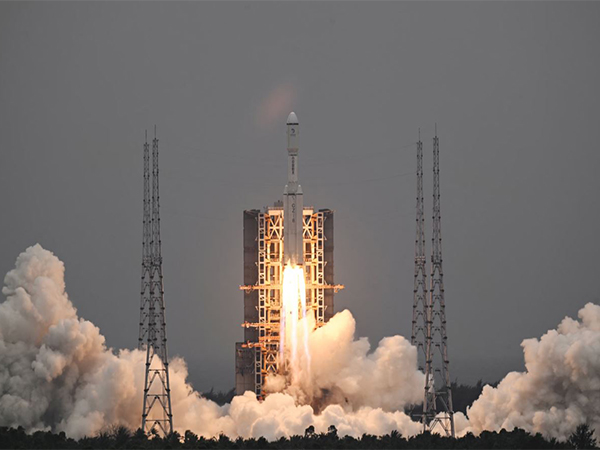
New Delhi [India], May 25 (ANI): While risk of global recession has receded but concerns of inflation is impending which re-ignites the risks of global financial stability.
IMF, World Bank and prominent rating agencies have predicted further slow-down in global growth this year. Escalation of the recent conflict in the Middle East, financial stress, persistent inflation and a slowdown in international trade are downside risks for global growth.
Adding to that a potential debt crisis is looming over the global economic landscape. The International Monetary Fund’s (IMF’s) Global Debt Monitor reported that the total global debt, private plus public, has risen to USD 235 trillion which is equivalent to 238 per cent of the global GDP.
Also there is a grave concern that fiscal prudence may take a back seat, as more than half of the world’s population is going to the election this year.
But amid all this pessimism, India is seen by international agencies and top rating firms as an emerging economic superpower of the world.
India’s central bank in its monthly economic review says “There is a growing optimism that India is on the cusp of a long-awaited economic take-off.” India is positioned to remain the fastest-growing major economy, demonstrating resilience amid geopolitical challenges and supply chain pressures.
Organisation for Economic Cooperation and Development (OECD) has projected global growth at 3.1 per cent in 2024, and 3.2 per cent in 2025.
But India is projected to grow at 6.6 per cent, the fastest among major emerging markets. China is projected to grow at 4.9 per cent and Brazil at 1.9 per cent.
Among advanced economies, US, UK and Euro area growth is projected at a mere 2.6, 0.4 and 0.7 per cent respectively.
Recently, the IMF, World Bank and rating agencies like Moody’s, S&P and many others have revised India’s growth upwards.
IMF’s April 2024 World Economic Outlook highlights the expected robustness of the Indian economy in 2024 and 2025 and attributes it to strong domestic demand and a growing working-age population.
RBI’s in its monthly economic report highlighted the attention of global observers to the dramatic reduction of poverty in India. Prime Minister Modi has said in his election rallies that over the last 10 years, 23 crore people have come out of poverty in India.
World Bank too has said that at the height of the COVID-19 pandemic in 2021, only 12.9 per cent of India’s population lived on USD 2.15 a day, the benchmark for extreme poverty.
Recent estimates suggest that extreme poverty in India is nearing extinction, a remarkable transformation for a country once synonymous with deprivation.
If we talk about the development works done over the last ten years. In the infrastructure space, India’s power sector has achieved 100 per cent electrification.
As per government data, rural areas now enjoy 20 hours of daily power availability, while urban areas have 23.5 hours. Additionally, India has become the world’s fourth-largest producer of renewable energy.
India is aggressively pushing research and innovations in green hydrogen energy. The government has announced many incentive schemes for investment in the sector.
According to the World Economic Forum (WEF) projections by the year 2030. Green energy will contribute 50 million net jobs and USD 1 trillion in economic impact.
Over the last ten years, India’s road and highways sector has grown with a rapid pace. By the end December 2023, India has about 66.71 lakh km of road network, which is the second largest in the world.
The digital revolution in India is another sector where the country has taken a lead, seven countries including France, UAE, Sri Lanka and Mauritius have adopted India’s UPI for financial transactions.
India is rapidly becoming a digital powerhouse of the world with the highest number of digital transactions globally and broadband connectivity reaching over 93 per cent of villages.
E-commerce platforms like the Open Network for Digital Commerce (ONDC) are expanding online market access for small businesses.
Government thrust on digital public infrastructure is not only enhancing productivity, efficiency, and employment but also adding hidden revenue to the government exchequer.
On the trade front, despite a slowdown in international trade, India’s exports marked an all-time high exports of USD 778 billion in FY24.
India has become the seventh-largest exporter of services globally and the second-largest among developing countries. According to UNCTAD, India beat the world average in services exports in 2023.
According to fDi intelligence, India is anticipated to be among the top 10 economies for foreign direct investment (FDI) momentum in the year 2024.
Despite a net outflow of USD 1.1 billion from Indian equities in April, the country’s foreign exchange reserves have increased by USD 21.7 billion in 2024, the highest among major reserve-holding nations.
Forex reserves now stand at USD 644.2 billion, covering more than 10 months of projected imports for 2024-25 and nearly all external debt as of the end of December 2023.
Gross inward foreign direct investment (FDI) remained stable at USD 71.0 billion during 2023-24, it was USD 71.4 billion a year ago.
RBI data shows that more than 60 per cent of the FDI equity flows were directed towards manufacturing, electricity and other energy, computer services, financial services and, retail and wholesale trade.
Singapore, Mauritius, the US, the Netherlands, Japan and the UAE contributed to more than 80 per cent of the flows. However, net FDI declined to USD 10.6 billion during 2023-24 from USD 28.0 billion a year ago, mainly reflecting higher repatriation.
Speaking at the annual Summit of industry body CII on May 17th, finance minister Nirmala Sitharaman asked the Industry not to ignore manufacturing as some economists suggest.
She said, “India must also increase manufacturing with the help of policies, its share in manufacturing in global value chains. So we need to have greater sophistication in our product manufacturing and we also need to see how this can be given the best policy support, IMF estimated that India’s contribution to the global growth for five years beginning 2023, will be 18 per cent, So, between 2023 and 2028 we are looking at an India which will be dynamic contributing to 18 per cent to the global growth.”
Reacting on FM’s push on manufacturing, esteemed banker K V Kamath, told ANI “If India grows at 7-7.5 per cent, manufacturing will happen on its own. It will happen on its own. I look at all that has been done, the clean balance sheets, (of banks) the opportunities before them, the growth that we see, the Indian economy should do extremely well.”
On India’s growth story Ajay Piramal, Chairman of Piramal Group told ANI that “We’ll be the third-largest economy, maybe a USD 40 billion economy. Even now, in the next – I think by 2029, we’ll be the third-largest economy. So only the U.S. and China will be ahead of us. So that’s a big progress the country is making. “
Government policies are pushing up new and innovative sectors in the manufacturing space. The Production Linked Incentive (PLI) schemes for 14 identified sectors, with a total outlay of about Rs 1.97 lakh crore are under various stages of implementation.
Some of the beneficiary sectors include EV, EV Batteries, Hydrogen electrolysers, pharma, food processing and electronics among others.
In the manufacturing space, the electric vehicle (EV) segment is a major disruptor. In March government came up with a new EV policy to attract investment in the sector.
The new EV policy allows the import of completely built units (CBUs) at a concessional 15 per cent duty for five years if a company invest USD 500 million in setting up a manufacturing unit in India.
The new policy is likely to be operationalised by the end of July. Companies will be given 120 days, window to apply under the scheme. This will open a window of opportunities for international EV manufacturers including Tesla to enter India.
In electronics, India has become a major player in the mobile phone market. Over the last ten years, mobile phone manufacturing in India has jumped 21 times to Rs 4.1 lakh crore from Rs 18,900 crore in 2014-15.
Powered by iPhone exports, India has become the world’s fifth largest exporter of mobiles at USD 29.1 billion in FY24 from USD 11.1 billion in FY23.
The recent CPI data of India indicates higher growth in consumer demand from the rural market, it indicates a bigger growth potential in years to come.
Goods and services tax (GST) collections in April 2024 recorded a y-o-y growth of 12.4 per cent, surpassing the Rs 2 lakh crore mark for the first time.
The S&P global outlook report has said that the Indian consumer market is likely to double by 2031. Consumer spending on food is estimated to rise to USD 1.4 trillion in India, spends on financial services will climb to USD 670 billion.
All this indicates that over the last one decade, India has become a prominent player in the global landscape, attracting the interest of investors, policymakers and businesses worldwide.
With a growth rate of over twice of most emerging market economies, lower tariffs, lower labour cost, special incentives by the government of India will continue to be a major attraction for investors. (ANI)






